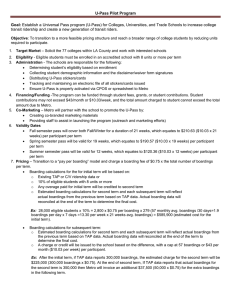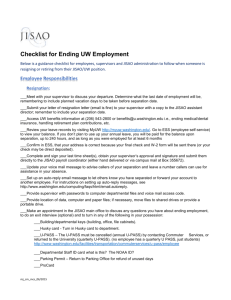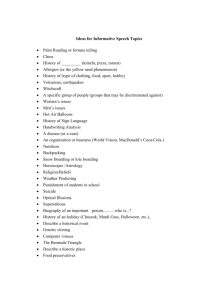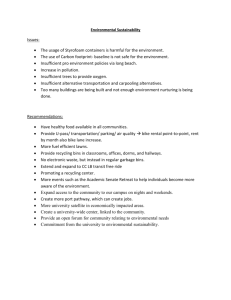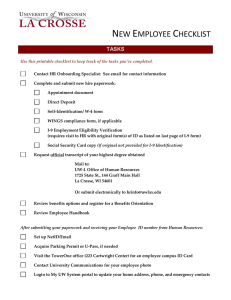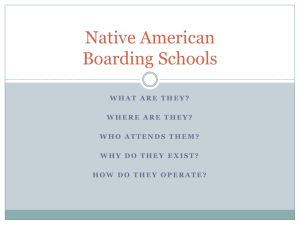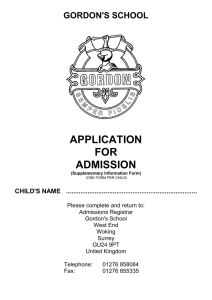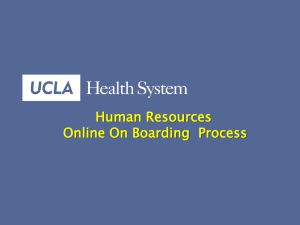Universal Pass Program (U-Pass) May 5, 2016
advertisement
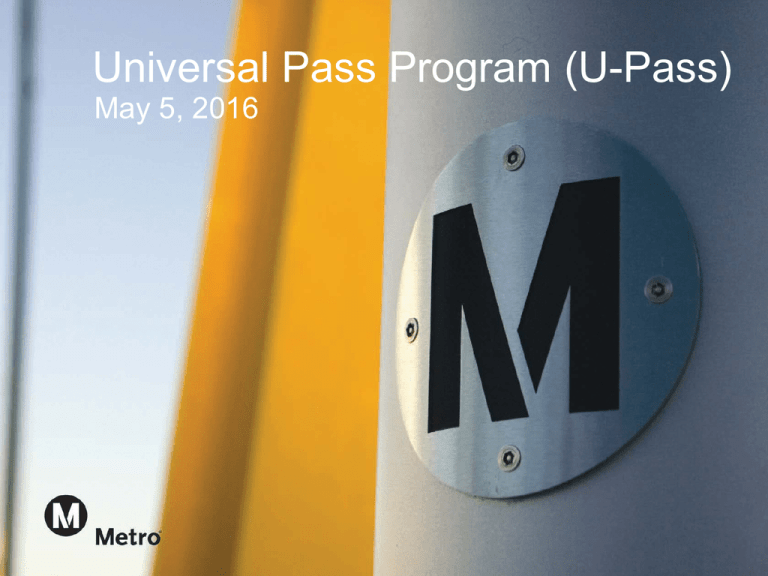
Universal Pass Program (U-Pass) May 5, 2016 U-PASS Goal: Establish a Universal Pass program (U-Pass) for Colleges, Universities, and Trade Schools to increase college transit ridership and create a new generation of transit riders. Objective: To transition to a more feasible pricing structure and reach a broader range of college students by reducing units required to participate. U-PASS (Cont.) 1. Target Market - Solicit the 77 colleges within LA County. 2. Eligibility – Student must be enrolled in an accredited school with 8 units or more. 3. Administration - The schools are responsible for the following: Determining student’s eligibility based on enrollment Collecting student demographic information and the disclaimer/waiver form signatures Distributing U-Pass stickers/cards Tracking and maintaining an electronic file of all stickers/cards issued Ensure U-Pass is properly activated via CPOS or spreadsheet to Metro U-PASS (Cont.) Sample U-Pass Sticker: Size: 1”H x 1.75”L Sample U-Pass Card: U-PASS (Cont.) 4. Financing/Funding -The program can be funded through student fees, grants, or student contributions. Student contributions may not exceed $43/month or $10.03/week, and the total amount charged to student cannot exceed the total amount due to Metro. 5. Co-Marketing – Metro will partner with the school to promote the U-Pass by: Creating co-branded marketing materials Providing staff to assist in launching the program (outreach and marketing efforts) U-PASS (Cont.) 6. Validity Dates Fall semester pass will cover both Fall /Winter for a duration of 21 weeks, which equates to $210.63 ($10.03 x 21 weeks) per participant per term Spring semester pass will be valid for 19 weeks, which equates to $190.57 ($10.03 x 19 weeks) per participant per term Summer semester pass will be valid for 12 weeks, which equates to $120.36 ($10.03 x 12 weeks) per participant per term U-PASS (Cont.) 7. Pricing – Transition to a “pay per boarding” model and charge a boarding fee of $0.75 x the total number of boardings per term. Boarding calculations for the for initial term will be based on: Existing TAP or C/V ridership data or 10% of eligible students with 8 units or more Any overage paid for initial term will be credited to second term Estimated boarding calculations for second term and each subsequent term will reflect actual boardings from the previous term based on TAP data. Actual boarding data will reconciled at the end of the term to determine the final cost. Ex: 28,000 eligible students x 10% = 2,800 x $0.75 per boarding x 279 (57 monthly avg. boardings /30 days=1.9 boardings per day x 7 days=13.30 per week x 21 weeks avg. boardings) = $585,900 (estimated cost for the initial term). U-PASS (Cont.) Boarding calculations for subsequent term: Estimated boarding calculations for second term and each subsequent term will reflect actual boardings from the previous term based on TAP data. Actual boarding data will reconciled at the end of the term to determine the final cost. A charge or credit will be issued to the school based on the difference, with a cap at 57 boardings or $43 per month ($10.03 per week) per participant. Ex: After the initial term, if TAP data reports 300,000 boardings, the estimated charge for the second term will be $225,000 (300,000 boardings x $0.75). At the end of second term, If TAP data reports that actual boardings for the second term is 350,000 then Metro will invoice an additional $37,500 (50,000 x $0.75) for the extra boardings in the following term. Thank you
